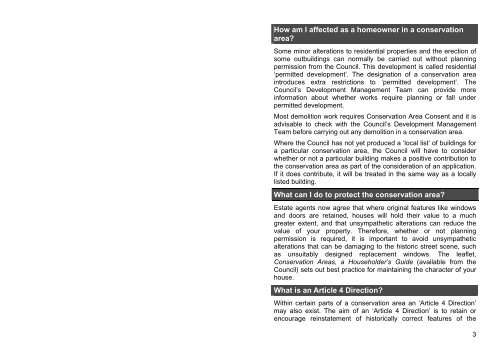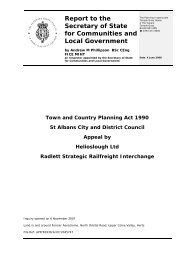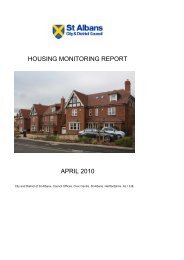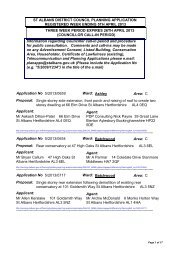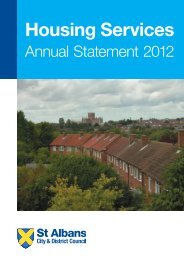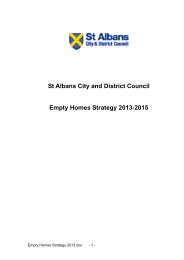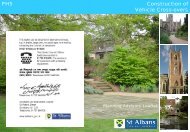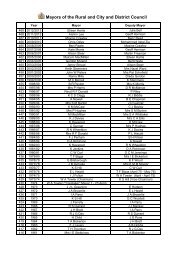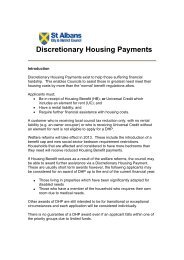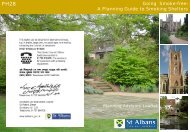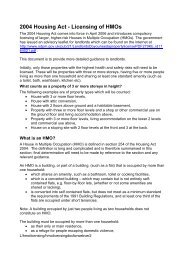Living in a Conservation Area PH6 - St Albans City & District Council
Living in a Conservation Area PH6 - St Albans City & District Council
Living in a Conservation Area PH6 - St Albans City & District Council
Create successful ePaper yourself
Turn your PDF publications into a flip-book with our unique Google optimized e-Paper software.
How am I affected as a homeowner <strong>in</strong> a conservation<br />
area?<br />
Some m<strong>in</strong>or alterations to residential properties and the erection of<br />
some outbuild<strong>in</strong>gs can normally be carried out without plann<strong>in</strong>g<br />
permission from the <strong>Council</strong>. This development is called residential<br />
‘permitted development’. The designation of a conservation area<br />
<strong>in</strong>troduces extra restrictions to ‘permitted development’. The<br />
<strong>Council</strong>’s Development Management Team can provide more<br />
<strong>in</strong>formation about whether works require plann<strong>in</strong>g or fall under<br />
permitted development.<br />
Most demolition work requires <strong>Conservation</strong> <strong>Area</strong> Consent and it is<br />
advisable to check with the <strong>Council</strong>’s Development Management<br />
Team before carry<strong>in</strong>g out any demolition <strong>in</strong> a conservation area.<br />
Where the <strong>Council</strong> has not yet produced a ‘local list’ of build<strong>in</strong>gs for<br />
a particular conservation area, the <strong>Council</strong> will have to consider<br />
whether or not a particular build<strong>in</strong>g makes a positive contribution to<br />
the conservation area as part of the consideration of an application.<br />
If it does contribute, it will be treated <strong>in</strong> the same way as a locally<br />
listed build<strong>in</strong>g.<br />
What can I do to protect the conservation area?<br />
Estate agents now agree that where orig<strong>in</strong>al features like w<strong>in</strong>dows<br />
and doors are reta<strong>in</strong>ed, houses will hold their value to a much<br />
greater extent, and that unsympathetic alterations can reduce the<br />
value of your property. Therefore, whether or not plann<strong>in</strong>g<br />
permission is required, it is important to avoid unsympathetic<br />
alterations that can be damag<strong>in</strong>g to the historic street scene, such<br />
as unsuitably designed replacement w<strong>in</strong>dows. The leaflet,<br />
<strong>Conservation</strong> <strong>Area</strong>s, a Householder’s Guide (available from the<br />
<strong>Council</strong>) sets out best practice for ma<strong>in</strong>ta<strong>in</strong><strong>in</strong>g the character of your<br />
house.<br />
What is an Article 4 Direction?<br />
With<strong>in</strong> certa<strong>in</strong> parts of a conservation area an ‘Article 4 Direction’<br />
may also exist. The aim of an ‘Article 4 Direction’ is to reta<strong>in</strong> or<br />
encourage re<strong>in</strong>statement of historically correct features of the<br />
3


